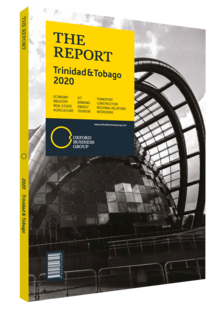Gillian Paul, President, College of Science, Technology and Applied Arts of Trinidad and Tobago: Interview

Interview: Gillian Paul
What efforts must be made in tertiary education to match programmes with labour demand?
GILLIAN PAUL: Programme offerings and real labour market demand must be better aligned. Reports continue to show an overproduction of graduates relative to demand, both in terms of the degrees and diplomas offered, and of the level of training and certification. Institutions are currently turning out large numbers of degree-level graduates in the social sciences and liberal arts; however, there is a growing need for better-trained technicians, technologists and para-professionals. This misalignment is contributing to unemployment and underemployment in almost all sectors of the economy.
Priority should also be given to establishing a labour market platform, where both potential students and employers could access real-time data on job opportunities and candidates. At the institutional level colleges and universities need to work more closely with employers through the establishment of advisory committees in order to tackle the issue of work-readiness.
A few courses and workshops are unable to develop deep capacity for problem-solving, critical thinking, teamwork, conflict resolution, entrepreneurship, communication and interpersonal skills, especially when the secondary and primary education systems continue to be examination-driven, leaving little time and incentive for the acquisition of these competencies. More work needs to be done to create an enabling environment for graduates to have a reasonable chance at becoming successful entrepreneurs, so that the emphasis shifts from unemployment to self-employment. This would represent a significant cultural shift in thinking about educational outcomes, and it is critical to the national objective of diversifying the economy.
Lastly, because the economy has not expanded as quickly as the graduate pool, employers should be incentivised to hire more graduates through fiscal policy interventions. In that regard, introducing tax exemptions or tax rebates could be a sensible option.
In what ways can T&T benefit from the remittance economy linked to the brain drain?
PAUL: T&T can benefit from the remittance economy in areas such as nursing and radiography, where there are global shortages in the supply of graduates. However, these can be extremely costly programmes to run, which are largely subsidised by the government. The risks of embracing the remittance economy, therefore, is that we may not actually receive a sufficient return on investment from remittances. More importantly, we risk our most competent workers to be recruited in other nations, while we continue to grapple with labour shortages and inefficiencies that negatively impact the quality of service we can deliver to our citizens.
How can education establishments work more closely with the private sector to ensure the preparedness of the workforce?
PAUL: In recent years many educational institutions have been lagging behind both citizens and private sector companies with regard to digital transformation. This materially affects the degree to which we are able to prepare our students for the workplace. The effects of this gap are most evident in the services sector, where digital competencies and adaptation are required to improve the range and quality of public services. To quickly address this imbalance, one option could be to create more opportunities for cooperative education and apprenticeships for students, as well as industry placements for faculty members. This would allow both teachers and students to have a better understanding of how technology is transforming the workspace across all sectors of the economy.
Lastly, financial literacy and inclusion should be one of the priority areas for training in all higher education institutions, both public and private. Indeed, it is essential to the objective of individual, institutional and national sustainability which are becoming the most significant problems facing educational institutions today.
You have reached the limit of premium articles you can view for free.
Choose from the options below to purchase print or digital editions of our Reports. You can also purchase a website subscription giving you unlimited access to all of our Reports online for 12 months.
If you have already purchased this Report or have a website subscription, please login to continue.

